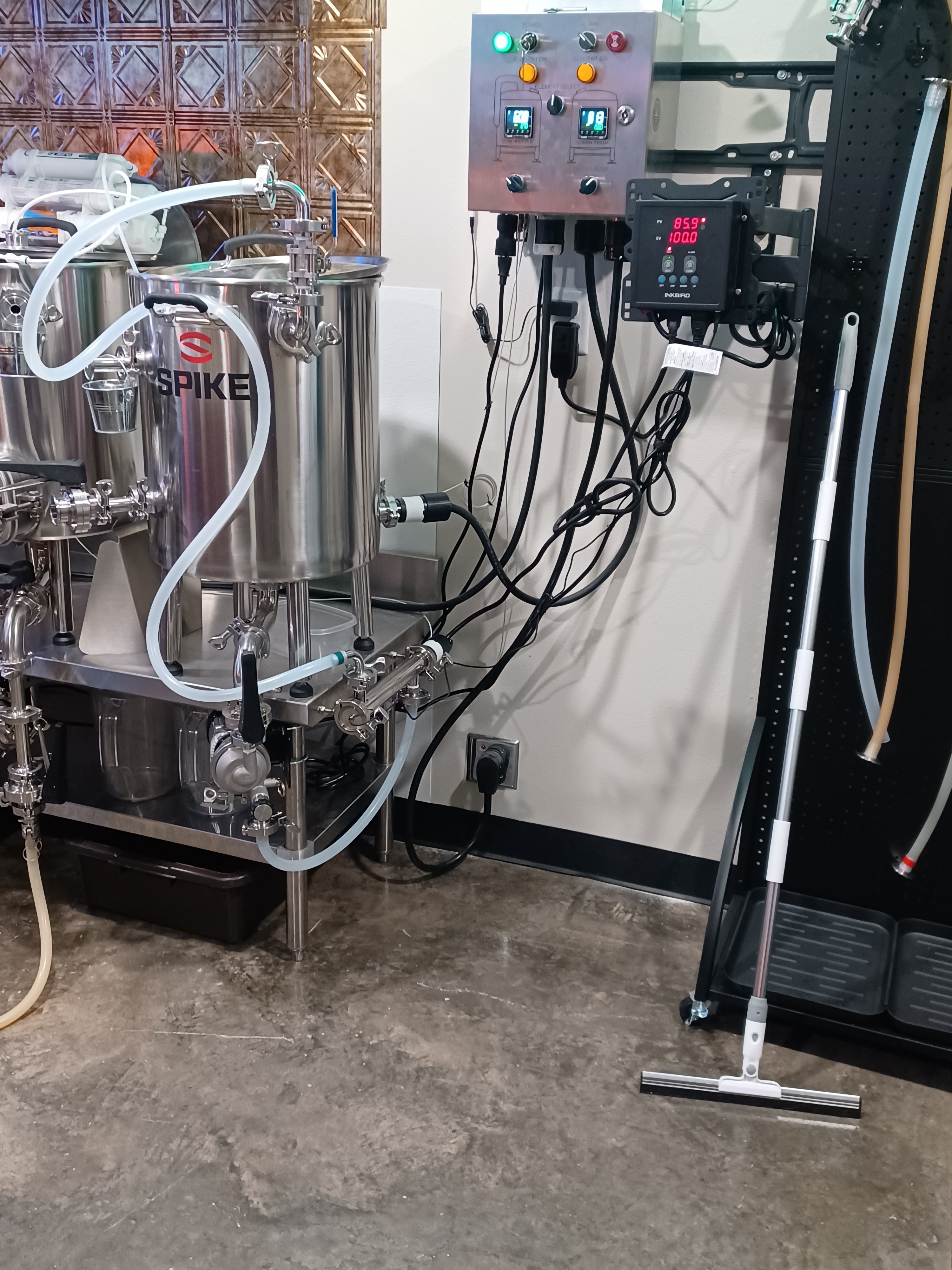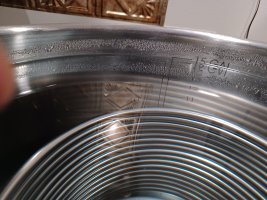How big is your HLT? This is just a hypothesis, in my view the optimal level of water in a HERMS would be at about the top of the coil. If you would like to limit the amount of time and energy involved from a strike water replenishment, fill the HLT to above the coil as much as possible (the remaining headspace) minus the volume of water you need to add to drop the HLT temperature back down from strike temperature to the mash temperature you need. We also want the water level to be just above the coil after this addition. This avoids unnecessarily heating the water above the coil, as it is most likely unnecessary. I'll give an example.
Suppose my keggle can hold 14 gallons, my coil top sits at the 10 gallon mark, and I need 4 gallons of strike water at 163F. If I heat the 14 gallons in the HLT to 160 and take the four gallons out, I will have 10 gallons of 163F water left right to the top of the coil. Ok, but I need the HLT to be about +3 (system dependent) vs the mash temp in the MT. So I need to drop the HLT to say 155F if I want to mash at 152. This might be roughly a one gallon addition. [Depends on your system and faucet temp.] If I add that gallon, I will be at 11 gallons in the HLT. That's one gallon more than I will ever need later so why heat it up? Same reason not to refill to 14 gallons. Instead, start with 13 gallons, dropping the HLT to 9 gallins after the strike, and adding one gallon back to top off at 10 gallons. You won't need 10 gallons of sparge water. I think this is the optimal approach for 5 gallons in most any HERMS without another heat source. You might need to approach ir even use the max HLT volume for larger 10 gallon grain bills. I have only just recently started paying close attention to the HLT volume and I don't do 10 gallon batches frequently enough to be more confident about the necessary volumes. If you use brewing software, you could review past recipes for strike and sparge volumes needed to determine whether you may need to max out your HLT initially. It may be common for 10 gallon batches but definitely not needed as much for 5 gallons. And for all my five and ten gallon recipes, I've never needed more water than the coil height. There's always some left over in the HLT and I never top off after sparging.
I think you are wasting time unnecessarily replenishing sparge water, particularly on a 30 amp system where you have to choose between the HLT and BK. I fly sparge, so I keep the HLT at 170F. This requires some input of heat so I can't fire the BK. I can switch elements once all the sparge water is in the MT while still draining. On a 5 gallon batch, I can be close to boiling by the end of sparging, 10 gallons a little longer. I think you may be creating an unnecessary loss of time by refilling and heating water after sparging. Now you could use your RIMS alone to keep your sparge water at 170F if fly sparging or even to heat the additional water you put in to replenish the sparge water. That would free up your 5500W element to start firing your BK. But you have to wait for the element to get covered in wort. Maybe you already thought of that too.






































![Craft A Brew - Safale S-04 Dry Yeast - Fermentis - English Ale Dry Yeast - For English and American Ales and Hard Apple Ciders - Ingredients for Home Brewing - Beer Making Supplies - [1 Pack]](https://m.media-amazon.com/images/I/41fVGNh6JfL._SL500_.jpg)





















